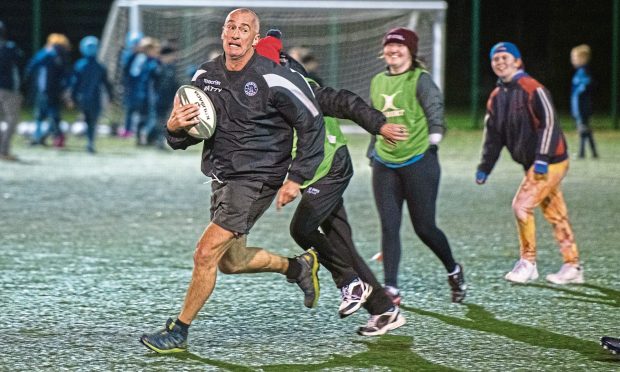Apologies to Andy Robinson, but if he is a little smug at still being the last Scotland head coach to plot victory over the Springboks in the wake of Saturday’s 26-20 loss at Murrayfield, he’s on his own.
Curiousity – and the fact that I couldn’t remember a single thing about the game – sent me back through Youtube last week to find the contest in 2010 when Scotland beat South Africa 21-17.
It was illuminating alright. A dreich day, a half-empty Murrayfield and those who were there seemed to be sitting on their hands.
Scotland were a grim team to watch in those days, and South Africa were simply awful.
But the Scots won, and Saturday’s team didn’t, I hear you say. Well, undeniably true, but if there truly is a movement to go back to that version of neanderthal rugby, count me out.
Today’s Scotland, and today’s game, are hugely more entertaining, and the fact that Murrayfield is full to the gunnels and rocking every time now – instead of half-full and like a library – shows the public think so too.
Furthermore, Robinson’s team barely moved on from that win and floundered at the World Cup a year later. The 2018 team have immeasurably more potential, and it’s because of the way they play.
That’s not to excuse Scotland’s defeat on Saturday one bit. It was a game they could have won, although they probably didn’t wholly deserve to; Springbok coach Rassie Erasmus’ summation at the end that it was a meeting of equals his team had edged was reasonably accurate.
And yes, in some respects Scotland’s willingness to play an open game was their downfall.
There was the chutzpah to run it out from their own 22 in the immediate aftermath of Pete Horne’s thrilling first half try, leading to a turnover and Handre Pollard scoring a key try for South Africa. And then the decision to go for the corner and maul lineout ball rather than take an easy three points which would have tied the game at 23-23 with an hour played.
Second-guessing Greig Laidlaw’s decision after the match was obvious hindsight, and I thought it was the right decision at the time – Scotland, having surprisingly eschewed the maul up until then, had just set one up in midfield and drove it 30 metres from halfway to the Springbok 22.
The execution at the lineout maul was the problem, not the decision based on the philosophy of the team under Gregor Townsend; this is not Robbo’s team barely moving it beyond Dan Parks.
This philosophy was also in running out the kick-off after Horne’s try, and this is where perhaps it maybe does need reining in; the momentum was with Scotland having sliced open the South Africans with two delicious off-loads by Huw Jones, and it didn’t need to be rammed home again quite so immediately with something even more spectacular.
A simple exit strategy – perhaps using Laidlaw’s strong box kick or a long boot to touch by Stuart Hogg, who kicked superbly from hand, would have been wiser. But again, everything would have been better had they executed the run-out better.
The third episode which suggested Scotland’s issue was execution rather than intent came after Laidlaw’s long penalty to restore parity at 20-20 after Willie le Roux was dreadfully yellow-carded for an intentional knock-on when clearly trying to intercept a looped Horne pass.
Jonny Gray was lifted to take Pollard’s kick-off, but there was a crucial misjudgement, a fumble and the livewire Sbu Nkosi pounced on the loose ball. Within two minutes Scotland were forced to infringe and Pollard kicked South Africa back in front.
That was 10 points surrendered far too easily in the immediate aftermath of Scottish scores which should have had the match moving in their favour.
Those ten points, and not the undeniable pressure South Africa had the Scots under at the breakdown, was the real difference in the game. Even that deficiency would have probably been solved by a better balanced Scottish back row, and John Barclay’s ability to pilfer opposition ball and protect his own is not available at present.
The one overriding issue the Scots had was execution, and the one concern is that 18 months into Townsend’s tenure it’s still a problem, as is consistency. There was no better illustration for this than Jones’ performance on Saturday – even if I still think he was wrongly singled out after Wales – and that of Finn Russell.
After an ebullient performance against Fiji, it was back to the hunted, indecisive Finn – too full of crazy ideas and off-loads under pressure. I’d have liked to see Scotland go to the successful Plan B of the spring when they hooked an off-colour Russell against both France and Italy and switched Laidlaw to 10, but it seems that ploy has been ditched as they develop Adam Hastings.
Even with Russell having one of his poor games, the Scots should maybe still have won. There seems more work to do in nailing down a more seamless execution not just at stand-off, finding a better balance of personnel in the pack, wrapping the electrifying Hogg in cotton wool.
But the potential remains. There can’t be any going back to 2010.

